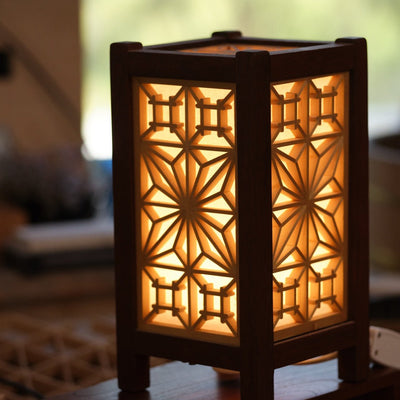Traditional crafts in Japan are a beautiful but delicate thing. Our business relies on skills that, once plentiful, are increasingly the domain of a group of people that grows smaller (and older) with each season. Imagine my delight, then, when I get to meet a young craftsperson who has struck out to rediscover a trade, revive it in their own work, and strives to teach and develop these skills in other people.
This video documents the 10 days I spent with Koichi Miyazaki, a young cooper on Goto Island, in February 2020.
Goto island is remarkable in itself. Lying 100km west of Nagasaki, it is an island sufficiently small and distant from the mainland that Japanese Christians in the Edo period moved to the islands in order to practice their religion, with varying degrees of success. To see a 100 year old stone church in a Japanese town is remarkable, and not a little bit strange.

To this area arrived Miyazaki-san and his family in the early 1990s. His father, a respected doctor on the mainland, and his mother had decided that they wanted to raise their children away from the pressure and pace of city life.
On Goto island, there was a well-known and respected bucket maker named Oshima. Miyazaki grew up around him in their small community and helped him with odd jobs around his shop while he was a boy. Miyazaki made his first buckets under Oshima after school and on holidays. However, when it became apparent that the Oshima-san would be retiring without an apprentice to carry on his work, Miyazaki's father encouraged him to learn as much as he could in the short time that remained.
Miyazaki studied full-time under Oshima-san for the final year of Oshima's working career, and Oshima-san formally entrusted the workshop and his customers to Miyazaki-san in 2016.
Buckets were very important for hime life in Japan (indeed, everywhere in the world) prior to the mass-manufacture of plastic and metal vessels. Miyazaki's work revolves around making large vessels for cooling sushi rice and adding the vinegar prior to making sushi, as well as smaller buckets for storing dry rice for long periods of time.
The bucket you can see me making in the video is for fermenting miso, which is another important part of Miyazaki-san's work and can become very large indeed.
I used Miyazaki's tools throughout the ten days, many of which had belonged to Oshima-san before him. He introduced me to concave and convex soled planes, which are used for profiling the insides and outsides of the buckets and work beautifully.

Also key to the cooper's craft is an extremely long plane that is placed upside down. Instead of pulling or pushing the plane, the staves of the bucket are worked along the sole. This tool needs to be straight and twice as long as the bucket will be tall in order to joint the edges of the staves truely.
Instead of using a flat blade, only the middle section of the blade is parallel to the sole, and each ear of the blade is greatly enlarged and slopes back to meet the sole. This allows the stave to be profiled in one direction or another with a single stroke.
My bucket, due to it needing to hold its contents for years at a time, has its growth rings oriented to travel around the bucket. This makes it trickier to build, but allows it a longer life. Buckets for holding things that don't need to retain as much moisture for as long have their grain oriented to radiate out from the centre of the bucket. This makes for a more aesthetically pleasing vessel, and more forgiving grain when fitting the staves together.
Finally, to bring everything together we had to weave the bamboo hoops. This was probably the single hardest hand-work I have ever had to do, as the preparation of the bamboo is painstaking, while the weaving is intricate and easy to get lost in. With Miyazaki-san's patient help, however, we were able to finish with a beautiful bucket.
This September I was able to return to Goto to see Miyazaki-san once again, and collect an order of six buckets for our workshop sharpening setup. As I have already said, traditional crafts are a beautiful and delicate thing, and ensuring that those who work in them can make a stable and comfortable living is key to those crafts continuing. In not too much time, I look forward to being able to sharpen with you in our workshop using Miyazaki's handcrafted buckets.
He is as pleased as I am that such beautiful work can contribute to learning and craft on another island far from Goto.



